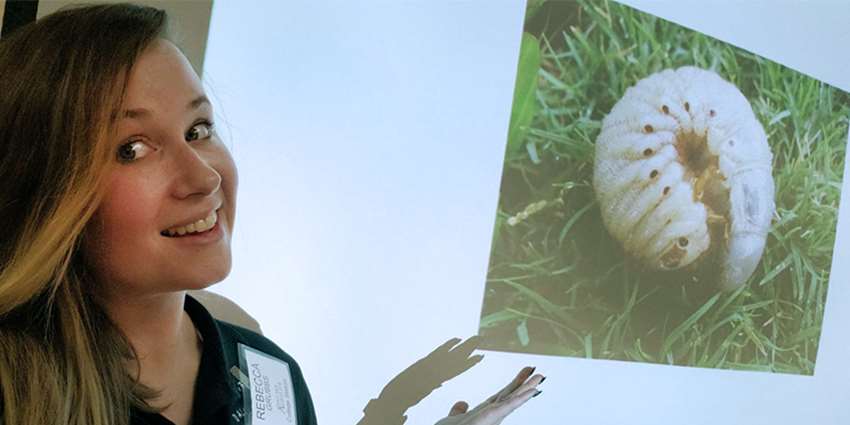From Lubbock to Athens, and now College Station, Dr. Rebecca Grubbs-Bowling, Texas A&M University assistant professor and Texas A&M AgriLife Extension Service turfgrass specialist in the Department of Soil and Crop Sciences, helps Texans better understand their turfgrass.
Grubbs-Bowling began her educational journey at Texas Tech University where she gained both her bachelor’s and master’s degrees in horticulture. She later received her doctorate in crop and soil sciences at the University of Georgia (UGA) where she researched environmental turfgrass science including precision turfgrass management and improved resource-use efficiency.
Her UGA research also had a social component in which she worked directly with homeowners to better understand the priorities that drove their lawn care decisions.
Since starting at Texas A&M last April, Grubbs-Bowling has worked on various projects that provide research-based education and outreach for homeowners as well as professional turfgrass managers and producers.
AgriLife Extension education and outreach projects include the program “Healthy Lawns and Healthy Waters,” geared particularly toward homeowners.
The program provides educational workshops and outreach tools needed for homeowners to use the best management practices for residential landscapes. It focuses on protecting water quality by reducing runoff through rainwater capture and providing information on ecologically appropriate quantities and timing of inputs to residential lawns in the watersheds.
Grubbs-Bowling also coordinates the Texas A&M Turfgrass Ecology and Management Short Course, a professional development tool for turfgrass managers throughout the state. She said the four-day short course allows an in-depth understanding of turfgrass systems, with the course’s main goal being to improve resource-use efficiency.
Resource-use efficiency is research or outreach designed to improve how efficiently resources are being used in management, Grubbs-Bowling said. It can refer to any resource inputs: water, nutrients, fossil fuels and more.
“Our objective is to empower turfgrass managers to make confident, well-informed decisions through a combination of applied and theoretical knowledge,” she said. “There’s a desire on our end as turfgrass researchers throughout the country to not only improve the management practices that are being done but also improve the quality of the grasses as a whole so that fewer inputs can go into them."
With the turf industry contributing about $6 billion annually to Texas’ economy, Grubbs-Bowling said everyone is involved in some way or another with turfgrass, whether it is a homeowner or golf course superintendent.
She said it is important to communicate to landscapers, homebuilders and communities that the key to a more water-conscious landscape is to focus on growing a healthy, vigorous root system. Deep, well-developed turfgrass roots are known to offer a number of water-related benefits including improved water infiltration and stress response. With a healthy root system, turfgrass will often be able to better withstand drought or flooding.
“No matter how small your little piece of Texas is, you have the power to have an impact on our resources and environment,” she said.

